
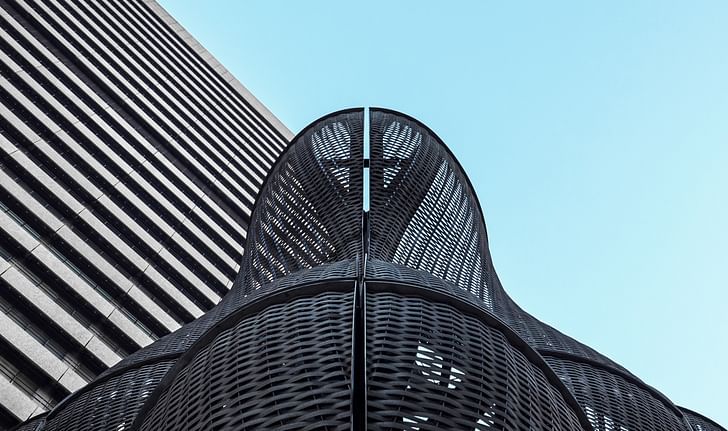
In Focus is Archinect's series of features dedicated to profiling the photographers who help make the work of architects look that much better. What has attracted them to architecture? How do they work? What type of equipment do they use? What do they think about seeing their work in blogs?
In this feature, we talk to Alex Upton based between London and Birmingham.
What is your relationship with architecture? What drew you to architecture, as a photographer?
Images of Norman Fosters’ HSBC Headquarters in Hong Kong captivated me as a child, soaring metal and glass on a vast scale, it was the future as I saw it then. Alas growing up in Birmingham – a city where once the concrete greys merged seamlessly with the clouds that hung above them - during the 80’s and 90’s I was rarely exposed to any such great pieces of modern architecture and like the city itself my passion for architecture stagnated for several years. As construction in the UK started to boom during the new century my dormant interest was once again awakened and I began to take a keen interest in new developments. It wasn’t simply architecture that appealed to me but the correlation between new architecture and how it was both a manifestation of and catalyst for prosperity, aspirations and social wellbeing – in short it was a reason to be optimistic about the future again.
Having worked for a number of years in the illustration, print and design industry I decided it was time for a change and moved to London to embark on a Fine Art Degree. Arriving in the city I was overwhelmed by the scale of construction and in my spare time began to visit many of the sites I had read about and photographed them merely as a hobby. During my BA I began to explore the representation of architecture in film and channelled what I learnt into my studio practice. From there I began making short films about architecture - it conveniently charged less than real actors! I was still tentatively navigating my way through a busy final year when the prospect of becoming an architectural photographer started cementing itself as a viable alternative to becoming a video artist - a life of bohemia, although appealing, entailed too many uncertainties.


Describe how you work... who are your clients?
I was about three months away from graduating when a fortuitous dialogue opened up between myself and a UK based cladding specialist. They had taken an interest in several images I had taken of one of their projects and from that point on I began to work with them and other clients in the materials sector of the construction industry. I have since worked for architects and both types of client offer their advantages. With materials suppliers there’s the opportunity to cover a far greater number of projects as they often simultaneously work on a large number of buildings. I am therefore exposed to a diversity of architecture which I wouldn’t be solely working for architects. Working in this manner I will sometimes visit up to six sites, in one city, in a day as lighting requirements are less of an issue when focusing in on architectural details. When working with architects there is more scope for contemplating the building, how people interact with it and lighting conditions, this makes for a more relaxed and considered approach to the photography although I enjoy both conditions of working.
Do you mostly work in a specific region? What is your travel schedule like?
I am currently based in London and while I work in regions all over the UK I do a considerable portion of my work here as there seems to be an insatiable supply of construction sufficient to slake my appetite for new and exciting architecture. I often spend long stretches driving along the country’s less than accommodating motorways. Whilst that can have its draw backs, such as leading to an unwanted, intimate familiarity with mundane things like the number of traffic cones lining a stretch of road or the varying circumferences of potholes it does enable me to explore many places I would probably never have considered going to. As I grow my client base I hope to work further afield and experience architecture in cities beyond the UK shores.
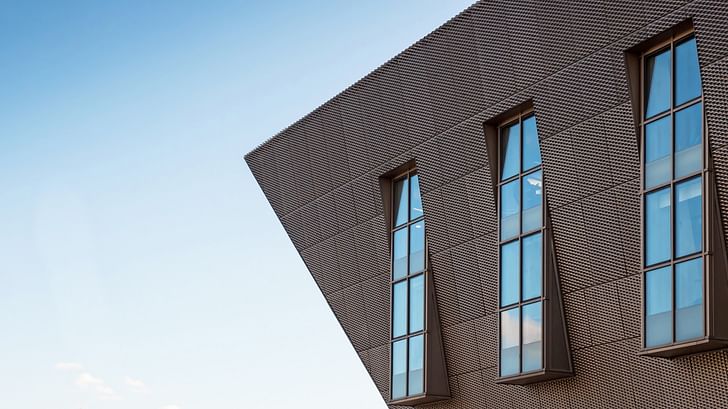
What is your goal when capturing buildings in photographs?
My goals are dictated by the client’s brief to a degree, but there is always room given for creative freedom. In any creative profession it’s easy to slip into a formulaic way of working if you know you only have to tick certain boxes to meet the client’s needs, so I find it necessary to go beyond what is expected, even if that occasionally means taking and editing more photos than would be required as I find clients are often receptive to images they wouldn’t initially expect. Both creative boundaries and freedoms have their benefits and lead to a better development of skills. When working for materials suppliers I am focused on close-up shots with less need to contextualise the building in its surroundings, coming from an artistic background I really enjoy focusing on these formal and material properties of architecture. If I am out photographing buildings for my own satisfaction I am often working with a different set of intentions, where I will be trying to abstract the buildings from their environment, viewing it in an unconventional way or simply taking a more conceptual approach - in this manner any building has the potential to be a worthy subject. Taking these various approaches has enabled me to develop my skills which I find translates to a better understanding of my commissioned work.
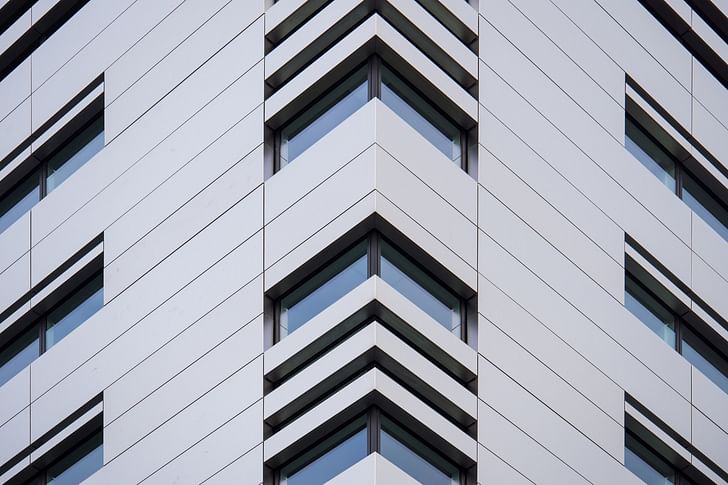
What are your thoughts about including people in your photos? Is it important to photograph a building in use, or by itself?
When I first started shooting buildings as a hobby I was always patiently waiting for that elusive moment when the building and surrounding streetscape would be devoid of people; with such clean and perfected forms it almost seemed that people were a minor inconvenience to their aesthetic appeal. In hindsight this was a misguided perspective for me to take since buildings are functional and exist to serve people, it is therefore helpful to show them occupied and in use. Nevertheless, there is still an aesthetic judgment to be made on behalf of the photographer; how many people should be in the photo, should their position be manipulated, should that person be a certain kind of person? All these considerations can be stifling and my approach now is to wait for a suitable moment when the subject isn’t overly obstructed and the people can give a hint as to how the space is used. I prefer not to manipulate a scene as this tends to be fairly transparent when viewing the photograph, making it resemble a carefully constructed render rather than a natural observation.
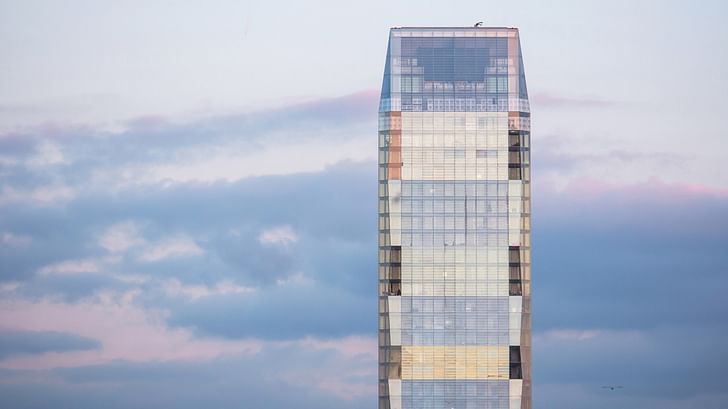
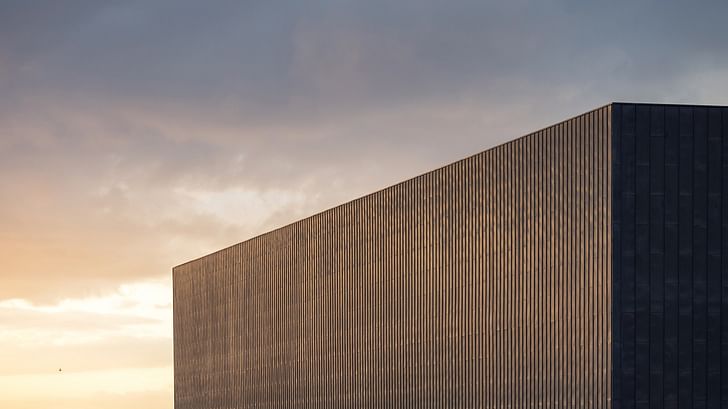
What are your favourite pieces of equipment?
I started out using the micro four thirds system - which for an architectural photographer may not be the conventional choice - as I was initially making films about architecture and the video and photographic capabilities of these cameras more than satisfied my requirements. At the end of the day small discrepancies between systems are negligible in the outcome of the work, it is the photographer that makes the image. If I am out shooting for myself then the Olympus 7-14 mm and Panasonic 35 -100 mm are my most trusted companions, they enable me to cover all bases.

Do you work alone?
I often work alone as it allows me to really focus on the objective without distractions, although I am occasionally accompanied by a representative of the client. This can be beneficial as it enables me to gain a better insight into the building and also proves helpful when negotiating site access as various levels of security can be stubbornly reluctant to let you photograph the building even when permission has already been granted.

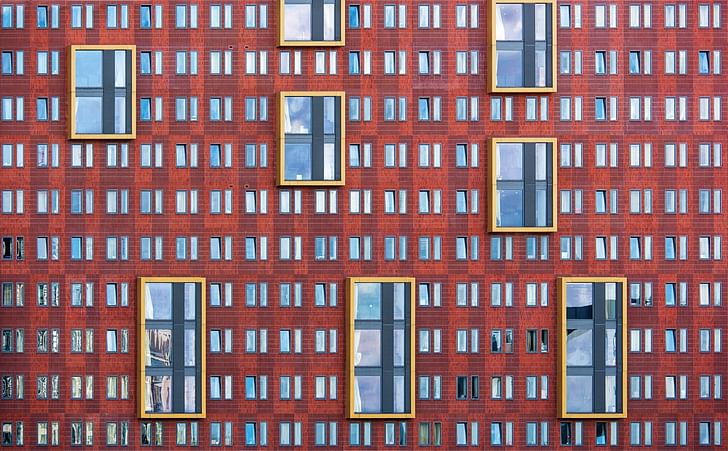
How do you feel about seeing your photographs on blogs and websites?
It is necessary for both myself and my clients to receive exposure using the photographs I capture and it’s great to see them in digital and physical publications. I also take and share many photographs for which I don’t receive payment, being passionate about what I do means that I don’t stop producing when their brief is completed. I inevitably hope these images I take will lead to future clients, but I also take them for personal satisfaction and hope that they can inspire and give viewers a new perspective on the spaces they inhabit.

Bio:
Alex’s approach to architectural photography is informed and complemented by his background in studying both Fine Art (BA Fine Art First-class Honours, University of the Arts London) and Design. This not only assures his consistent attention to detail and quality, but also enhances his understanding of form, space, composition and materials in relation to architecture. With this combined experience, Alex is able to provide a service which not only conveys the physical elements of the building, but also the conceptual ones.
Having spent several years documenting construction and architecture, Alex has gained a natural understanding of the built environment which informs his approach to photographing architecture. With this knowledge base, Alex is able to convey his client’s every needs; whether they be a focus on external cladding, interiors spaces or contextual images showing the building in the surrounding cityscape.
Alex's clients Include: Taylor Maxwell, Sheppard Robson Architects, Die Zeit, OAG, Structura UK, Max Fordham, Forterra, Paul Murphy Architects.
See more of his work on his website and follow his Twitter, Instagram, and Facebook for updates.
Ellen Hancock studied Fine Art and History of Art at The University of Leeds and Sculpture at Mimar Sinan Fine Arts University in Istanbul.Now based in London she has a keen interest in travel, literature, interactive art and social architecture.
No Comments
Block this user
Are you sure you want to block this user and hide all related comments throughout the site?
Archinect
This is your first comment on Archinect. Your comment will be visible once approved.